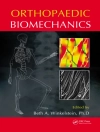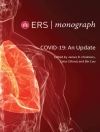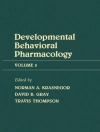This is the third, fully revised edition of a well received book that provides clear practical guidance on all aspects of the penetrating trauma surgical treatment. It aims at fostering the type of strategic thinking that can save patients’ lives. The coverage encompasses prehospital care and operative management in penetrating injuries to various body regions and specific organs. Tips, tricks and technical pearls are highlighted by experienced doctors and each chapter includes a list of the most important points to observe. This third edition of Penetrating Trauma has been extensively revised and updated – with inclusion of some entirely new chapters – to take into account the most recent trends in resuscitation, diagnostics, and treatment. It will be an ideal resource for all physicians managing penetrating trauma.
Inhoudsopgave
Part 1. Prehospital Care, Diagnostic Tools and Resuscitation Strategies.- 1. Prehospital Care of Penetrating Trauma.- 2. Airway Management in Penetrating Trauma.- 3. Damage Control Resuscitation in Penetrating Trauma: Rules of the Game.- 4. BLS Versus ALS.- 5. Prehospital Care and Transport.- 6. Prehospital Monitoring During Transport.- 7. Trauma Resuscitation.- 8. ABC Heuristics.- 9. Pediatric Trauma Resuscitation.- 10. Fluids, Blood Substitutes, and New Tools.- 11. Emergency Department Thoracotomy.- 12. Intensive Care: Principles and Therapy.- 13. Ventilation in the Trauma Patient: A Practical Approach.- 14. Practical approach to ECMO.- 15. Management of sepsis and septic shock.- 16. Endpoints of Resuscitation.- 17. Plain X-Rays for Penetrating Trauma.- 18. Computed Tomography in the Workup of Patients with Penetrating Trauma.- 19. Portable Ultrasound as an Adjunct in Penetrating Trauma.- 20. Laparoscopy and Penetrating Trauma.- 21. Angiography and Interventional Radiology.- 22. Imaging of Penetrating Urologic Trauma.- 23. Practical approach to REBOA.- 24. Video-Assisted Thoracic Surgery in Penetrating Chest Trauma.- 25. Diagnostic Peritoneal Lavage (DPL) Unplugged.- 26. Mass Casualties and Triage in Military and Civilian Environment.- 27. Ballistics in Trauma.- Part 2. Surgical Strategies in Penetrating Trauma to Head, Face, and Neck.- 28. Surgical Strategies in Trauma.- 29. Surgical Strategies in Trauma to the Head, Face, and Neck.- 30. Penetrating Injuries of the Face.- 31. Operative Strategies in Penetrating Trauma to the Neck.- 32. Access to the Neck in Penetrating Trauma.- 33. Penetrating Trauma to the Larynx and the Cervical Trachea.- 34. Penetrating Injury to the Pharynx and Cervical Esophagus.- 35. Carotid, Jugular and Vertebral Blood Vessel Injuries.- Part 3. Surgical Strategies in Penetrating Trauma to the Chest.- 36. Penetrating Trauma to the Subclavian Vessels.- 37. Penetrating Trauma to the Thoracic Oesophagus.- 38. Penetrating Trauma to the Mediastinal Trachea and Main Bronchi.- 39. Operative management of pulmonary injuries.- 40. Operative management of delayed complications of pulmonary and pleural injury.- 41. Penetrating Injuries to the Mediastinal Vessels.- 42. Penetrating Cardiac Trauma.- 43. Penetrating Injuries to the Diaphragm.- 44. Approach to Thoracoabdominal Injury.- 45. Loss of the Chest Wall.- Part 4. Surgical Strategies in Penetrating Trauma to the Abdomen and Pelvis.- 46. Access to the Abdomen: Emergency Laparotomy.- 47. Damage Control Surgery.- 48. Beyond Damage Control Surgery: Abdominal Wall Reconstruction and Complex Hernia Repair.- 49. Abdominal Esophagus and Stomach.- 50. Duodenum.- 51. Penetrating Trauma to the Pancreas.- 52. Liver and Extrahepatic Bile Ducts.- 53. Large and Small Bowel.- 54. Injury of the Kidney, Ureter, and Bladder.- 55. Lower Genitourinary Injuries.- 56. Major Abdominal Veins.- 57. Major Abdominal Arteries.- 58. Spleen.- 59. Penetrating Rectal Injuries.- 60. Abdominal Compartment Syndrome.- 61. SNOM: Conservative Management of Solid Viscera.- 62. Bleeding in the Pelvis.- Part 5. Neurological trauma.- 63. Gunshot Injuries to the Head.- 64. Approach to penetrating injury of the spinal cord.- 65. Early Neurotrauma Rehabilitation.- Part 6. Surgical Strategies in Penetrating Trauma and Orthopedic Injuries.- 66. Introduction to Orthopedic Injuries.- 67. Extremity Fractures.- 68. Compartment Syndrome of the Extremities.- 69. Trauma to the hand.- 70. Trauma to the foot.- 71. Penetrating Trauma: Amputations.- 72. Amputations of the Hand and Foot After Destructive Gunshot Injuries.- 73. Anterior Exposure of the Thoracic and Lumbar Spine.- Part 7. Peripheral Arterial Injuries.- 74. Peripheral Arterial Injuries from Penetrating Trauma.- 75. Axillary and Brachial Vessels.- 76. Femoral Vessels.- 77. Popliteal Vessels.- Part 8. Other Topics.- 78. Penetrating arterial injuries below elbow/knee.- 79. Management of Penetrating Soft Tissue Injuries.- 80. Burns and Inhalational Injury.- 81. Crush Injuries.- 82. Blast Injuries.- 83. The Elderly Patient.- 84. The Pediatric Patient.- 85. The Pregnant Patient.- 86. Emergency Cesarean Delivery in pregnant patient with penetrating trauma and in-theatre neonatal support.- 87. Anticoagulation in Penetrating Trauma.- 88. Approach to perioperative nutritional support.- 89. Perioperative pain management.- 90. Care Under Austere Conditions: Unlimited Restraints.- 91. The Impact of Trauma on the Psyche.- 92. Rehabilitation.- 93. “Rehabilitation Matters!”: Physical Rehabilitation as an Essential Process Post-acute Trauma Care.- 94. Penetrating Injury Prevention.- 95. Forensic Pathology and Trauma.- 96. Ethics in Severe Trauma.- 97. Organ Donation.- 98. The Economics of Trauma Care.
Over de auteur
Elias Degiannis, MD, Ph D, FRCS (Glasg.), FCS (SA), FACS, Sub-specialty Trauma Surgery (SA) Elias Degiannis is Professor Emeritus at the Department of Surgery of the University of the Witwatersrand, Johannesburg, South Africa. He was the Head of the Trauma Directorate at the Chris Hani Baragwanath Academic Hospital and Academic Head of the Division of Trauma of the University of the Witwatersrand. He developed several international “Hands-on” Fellowships for overseas surgeons who wanted to expand their experience in Trauma. He has Honorary Memberships / Fellowships of the Hellenic Trauma Society, the Brazilian College of Surgeons, the Association of Surgeons of Spain, the German Society for Surgery, the Finnish Trauma Society, the Austrian Society for Surgery, the German Trauma Society. He has been awarded the Silver and the Golden Cross of Honour of the German Armed Forces.
Dietrich Doll, MD, Ph D (med.), Ph D (theol.), Surgeon, Visceral Surgeon, FACSDietrich Doll is a Professor of Surgery and Director of ATLS, DSTC Director & International Faculty; Disaster & Mass Casualty Medicine, Hyperbaric & Diving medicine. He is currently is a Fellow of the American College of Surgeons (FACS), a Professor of Surgery at the University of Saarland, Medical School, Visiting Professor at Harvard University, Honorary member of the Hellenic Trauma Society, and Head of the Procto-Surgery Department at St. Mary’s Hospital Vechta. He is the founder and CEO of the Vechta Research Institute since 2013. Professor Doll was a Honorary Senior Consultant & Honorary Senior Lecturer, Department of Surgery, Chris Hani Baragwanath Academic Hospital and the University of the Witwatersrand Medical School, Johannesburg, , South Africa.
George C. Velmahos, MD, Ph D, MSEd, FACS, FCCM, FRCS (Ed.), FCRPS (Glasg.), MCCM George C. Velmahos is the John F Burke Professor of Surgery at Harvard Medical School and the Chief of the Division of Trauma, Emergency Surgery, and Surgical Critical Care at the Massachusetts General Hospital in Boston, USA. He is a Fellow of the American College of Surgeons, American College of Critical Care Medicine, Royal College of Surgeons of Edinburgh, and Royal College of Physicians and Surgeons of Glasgow. He is also a member and officer in numerous American and International surgical societies. He is the founder of the MGH Trauma Research Center, has authored over 600 peer-review publications, and directs the annual Harvard Trauma Symposium. He is an Honorary Professor in multiple Universities around the world.












